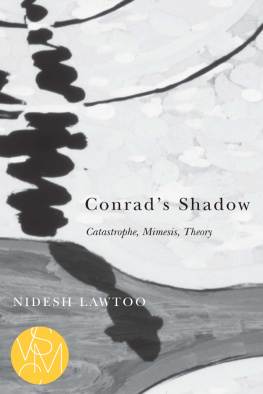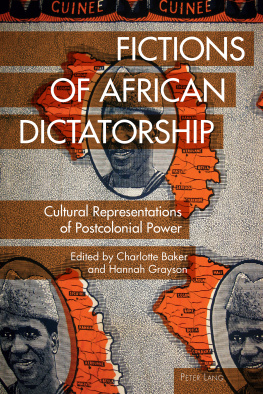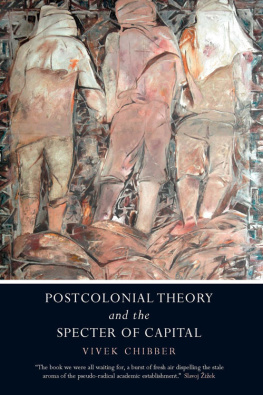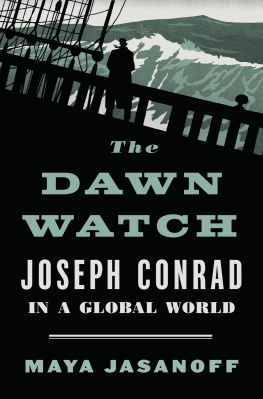STUDIES IN VIOLENCE, MIMESIS, AND CULTURE
SERIES EDITOR
William A. Johnsen
The Studies in Violence, Mimesis, and Culture Series examines issues related to the nexus of violence and religion in the genesis and maintenance of culture. It furthers the agenda of the Colloquium on Violence and Religion, an international association that draws inspiration from Ren Girards mimetic hypothesis on the relationship between violence and religion, elaborated in a stunning series of books he has written over the last forty years. Readers interested in this area of research can also look to the associations journal, Contagion: Journal of Violence, Mimesis, and Culture.
ADVISORY BOARD
Ren Girard, Stanford University
Andrew McKenna, Loyola University of Chicago
Raymund Schwager, University of Innsbruck
James Williams, Syracuse University
EDITORIAL BOARD
Rebecca Adams, Independent Scholar
Jeremiah L. Alberg, International Christian University, Tokyo, Japan
Mark Anspach, cole Polytechnique, Paris
Pierpaolo Antonello, University of Cambridge
Ann Astell, University of Notre Dame
Cesreo Bandera, University of North Carolina
Maria Stella Barberi, Universit di Messina
Alexei Bodrov, St. Andrews Biblical Theological Institute, Moscow
Joo Cezar de Castro Rocha, Universidade do Estado do Rio de Janeiro
Benot Chantre, Lassociation Recherches Mimtiques
Diana Culbertson, Kent State University
Paul Dumouchel, Ritsumeikan University
Jean-Pierre Dupuy, Stanford University, cole Polytechnique
Giuseppe Fornari, Universit degli studi di Bergamo
Eric Gans, University of California, Los Angeles
Sandor Goodhart, Purdue University
Robert Hamerton-Kelly, Stanford University
Hans Jensen, Aarhus University, Denmark
Mark Juergensmeyer, University of California, Santa Barbara
Cheryl Kirk-Duggan, Shaw University
Michael Kirwan, SJ, Heythrop College, University of London
Paisley Livingston, Lingnan University, Hong Kong
Charles Mabee, Ecumenical Theological Seminary, Detroit
Jzef Niewiadomski, Universitt Innsbruck
Wolfgang Palaver, Universitt Innsbruck
ngel Jorge Barahona Plaza, Universidad Francisco de Vitoria
Martha Reineke, University of Northern Iowa
Tobin Siebers, University of Michigan
Thee Smith, Emory University
Mark Wallace, Swarthmore College
Eugene Webb, University of Washington
Copyright 2016 by Nidesh Lawtoo
 The paper used in this publication meets the minimum requirements of ANSI/NISO Z39.48-1992 (R 1997) (Permanence of Paper).
The paper used in this publication meets the minimum requirements of ANSI/NISO Z39.48-1992 (R 1997) (Permanence of Paper).

Michigan State University Press
East Lansing, Michigan 48823-5245
Printed and bound in the United States of America.
22 21 20 19 18 17 16 1 2 3 4 5 6 7 8 9 10
LIBRARY OF CONGRESS CATALOGING-IN-PUBLICATION DATA
Names: Lawtoo, Nidesh, author.
Title: Conrads shadow : catastrophe, mimesis, theory / Nidesh Lawtoo.
Description: East Lansing : Michigan State University Press, [2016] | Series: Studies in violence, mimesis, and culture | Includes bibliographical references and index.
Identifiers: LCCN 2015041932| ISBN 9781611862188 (pbk. : alk. paper) | ISBN 9781609175030 (pdf) | ISBN 9781628952766 (epub) | ISBN 9781628962765 (kindle)
Subjects: LCSH: Conrad, Joseph, 18571924Criticism and interpretation.
Classification: LCC PR6005.O4 Z76465 2016 | DDC 823/.912dc23 LC record available at http://lccn.loc.gov/2015041932
Book design by Charlie Sharp, Sharp Des!gns, Lansing, Michigan
Cover design by David Drummond, Salamander Design, www.salamanderhill.com.
Cover artwork is a still frame taken from L Homme sans ombre (The Man with No Shadow2004), directed by Georges Schwizgebel and is used with permission from Georges Schwizgebel.

Michigan State University Press is a member of the Green Press Initiative and is committed to developing and encouraging ecologically responsible publishing practices. For more information about the Green Press Initiative and the use of recycled paper in book publishing, please visit www.greenpressinitiative.org.

Visit Michigan State University Press at www.msupress.org
To Kim and Nia,
for harbors to come
...
Acknowledgments
Shadows do not appear without material, intellectual, artistic, and affective supportand even then, one needs to be on the move to catch up with them. I am very grateful to the graduate students in my seminar The Secret Shadow in 2012 at the University of Lausanne for helping me sketch the main outlines of this book; to the Swiss National Science Foundation for granting me a generous fellowship that single-handedly funded my entire research at Johns Hopkins University from 2013 to 2016, during which time this book was written; and to The Humanities Center for continuing to providefifty years after the birth of theoryheterogeneous theoretical foundations that allowed me to keep up with the conceptual protagonist of this book, as it moves from literary to psychological, anthropological to philosophical territories.
I am particularly grateful to Hent de Vries, Paola Marrati, Ruth Leys, and Michael Fried for their warm support and stimulating theoretical exchanges; to Dick Macksey for sharing stories about Girard, Derrida, and other suspects; to Gaby Spiegel for inviting me to contribute to the Andrew W. Mellon Seminar, and to all of its participantsRachel Galvin, Leo Lisi, Yi-Ping Ong, Anne Moss, Jeanne-Marie Jackson, Sharon Achinstein, among othersfor putting up with the avatars of mimesis. Doug Mao I thank forinviting me to present my brand of bad modernism in the English Department; Jane Bennett and Bill Connolly for animating a magical summer-night reading group that generated vital matter to ruminate (in the Nietzschean sense), for inviting me to contribute to their seminars, and for the vitalism of their friendship; and Paul Delnero for our ritual after-work theoretical conversations, occasional Freudian skirmishes, and regular drinks.
And over the years, I have gotten unflagging support from Conradians of all stripes and persuasions on both sides of the Atlantic. The four Joseph Conrad Societies (of America, UK and Ireland, Poland, and France) provided the most welcoming and stimulating contexts to test out ideas still in embryonic stages. In particular, Anne Luyat, Richard Ruppel, Jack Peters, Richard Richardson, Paul Armstrong, and Lissa Rebozo-Schneider have actively contributed to giving substance to theoretical shadows by repeatedly inviting me to present papers at the MLA on subjects as diverse as Conrad and Darwin, Conrad and Narrative, Conrad and the Brain, and Conrad and Ecology. Jonathan Dollimore, Martine Hennard, Keith Carabine, Hugh Epstein, and J. Hillis Miller, I thank for reading portions of this manuscript and for providing valuable feedback; Gary Handwerk, Henry Staten, Mikkel Borch-Jacobsen at the University of Washington, I thank for steering me early on toward turbulent theoretical currents and for their persistent professional help; and Rachel Falconer and Martine Hennard for joining the club of phantom supporters and for participating in a stimulating reading group at the University of Lausanne. On the side of mimetic theory, I am grateful to the participants of the COV&R for their openness to the different forms mimesis can take and for encouraging me to endrather than startbattles. Last but not least, thanks to Anastasia Wraight at Michigan State University Press for her careful editorial work, and my editor, Bill Johnsen, for providing a timely editorial echo no Conradian could possibly resist: just after the











 The paper used in this publication meets the minimum requirements of ANSI/NISO Z39.48-1992 (R 1997) (Permanence of Paper).
The paper used in this publication meets the minimum requirements of ANSI/NISO Z39.48-1992 (R 1997) (Permanence of Paper).

